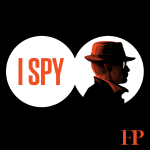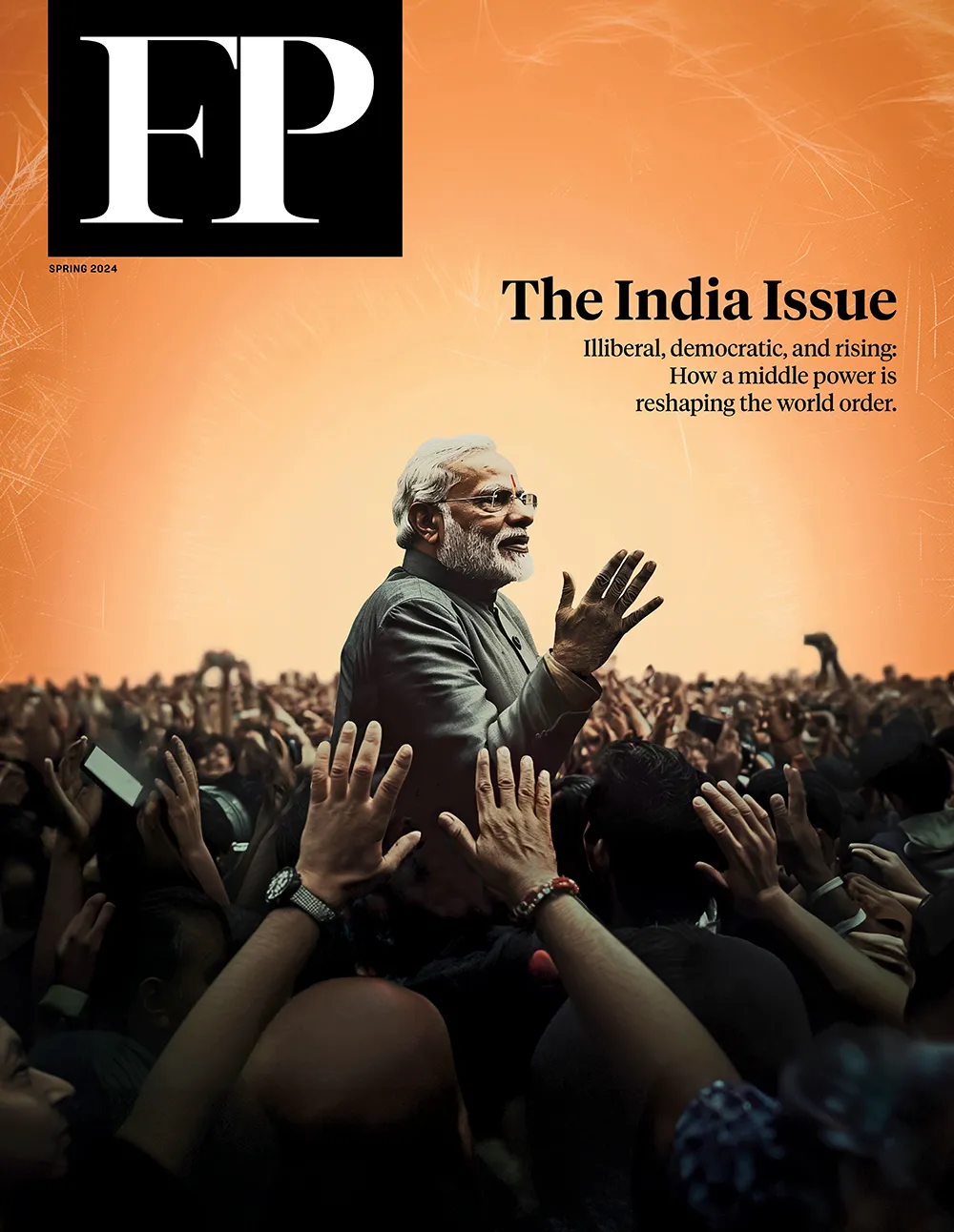Kherson Is Liberated but Not Yet Freed
Although Ukraine has reclaimed the one provincial capital taken by Russia, there’s still a long road to recovery.
KHERSON, Ukraine—Draped in yellow and blue, children gathered in Kherson’s main square to ask soldiers to autograph their flags; the Ukrainians who liberated this city from eight months of brutal Russian occupation are local celebrities now.
Young boys holding toy guns dress up as Ukrainian soldiers and police officers in Kherson, Ukraine, on Nov. 16.Liz Cookman Photos for Foreign Policy
KHERSON, Ukraine—Draped in yellow and blue, children gathered in Kherson’s main square to ask soldiers to autograph their flags; the Ukrainians who liberated this city from eight months of brutal Russian occupation are local celebrities now.
Since the Ukrainian soldiers arrived here last Saturday, residents of Kherson—the first Ukrainian city to fall under Russian occupation and the only regional capital—have been jubilant. Cars circle downtown booming out the previously banned Ukrainian national anthem and women cry with relief. An exclamation of “Slava Ukraini” is met with hundreds of raucous responses of “Heroyam Slava,” meaning “glory to the heroes.”
Life under enemy rule was grueling. Food was scarce and expensive, and four locations containing alleged torture chambers have been discovered by prosecutors in the city, with another three found in the wider region. Activists and partisans say they went into hiding. An accusation of being pro-Ukrainian could lead to beatings, electrocution, or cost you your life. “I stayed at home the whole eight months and even walked my dog in the yard,” said Maryna Zinevich, 54, who helped run an organization that produced nets and socks for Ukrainian soldiers before the war.
Former soldier Maksym Nehrov, 45, said he was detained for three weeks on March 15 at a former police station with little to do other than listen to the screams of the other inmates. He said his Russian captors attached clips and wires to his ears to administer electric shocks during interrogations. He heard others never made it out of detention.
Sara, 12, stands in Kherson’s main square on Nov. 16, wrapped in a Ukrainian flag that is covered in autographs of the soldiers who liberated the city.
“We know more than 869 people were imprisoned here,” said Volodymyr Kaluha, a representative of the Kherson regional prosecution, outside a set of dingy, metal-fronted storage lockers at a former police station where he said people were tortured. The walls inside are scrawled with the letter Z and “Zeila, we’re coming,” a Russian message using a derogatory term for Ukrainian President Volodymyr Zelensky. “Only 480 were released. We don’t yet know what happened to the others,” Kaluha said.
Police said they are also aware of 50 fresh graves at the local cemetery, and they plan to exhume them to investigate what happened. A local ombudsman has described the scale of torture cases as “horrific,” even when compared to what has already been seen in previously liberated areas around Kyiv and the Kharkiv region. Hundreds of bodies were buried near the capital and the biggest city in the east after Russian forces were pushed out, showing signs of torture in what international bodies have described as possible war crimes.
Now that the Russians have gone, retreating across the Dnipro River to defensive positions in the eastern part of the region, pro-Ukrainian sentiment has never been stronger in a city that—for the most part—speaks Russian. Little boys now run through the streets with toy guns, dressed as their new idols: Ukrainian soldiers.
“We couldn’t believe the reception we got,” said a Crimean Tatar known by the call sign “Warrior” in between requests for photos in Kherson’s main square. He signed up for the military after a massacre was uncovered in Kyiv’s Bucha suburb this spring before taking part in the offensive to retake Kherson. He’s from a place not far away, a chunk of Ukraine that’s been occupied by Russia since its first invasion of Ukraine in 2014.
Crimean Tatar soldier known by call sign “Warrior” poses in Kherson’s main square on Nov. 16 amid celebrations of the city’s liberation.
Russian forces apparently expected to be greeted as liberators in many parts of Ukraine after being told they were leading a “special military operation” to “de-Nazify” a democracy headed by a Jewish president. Instead, flowers have been showered at the men in blue and yellow.
“They threw petals at our feet as we walked. Later, they gave us children’s drawings of Ukrainian symbols. Everyone was hugging us,” said “Kholod,” a Ukrainian soldier who like many uses a call sign for security purposes. He, along with “Shults” and “Khorvat,” were part of an elite special task force that took part in the push to recapture Kherson—a mission thought to be a feint for the main Ukrainian offensive in the east—until Russian forces melted before them. His unit lost three men in the push, including one as they approached his home village.
Russian Defense Minister Sergei Shoigu announced last week that he had given the order to pull troops from their exposed position on the west bank of the river, a psychological blow to a country that’s had few military advances in nine months of fighting. Russia had hoped to use Kherson as a secure base to push west, including moving the families of Russian service members—part of Russian President Vladimir Putin’s plans to Russify the area, according to local residents—and holding an illegal referendum to nominally annex the area under Moscow’s control.
Instead, Russians and those who collaborated with them were seen scrambling into boats across the river this week, clutching hastily packed bags in a panic to avoid arrest by Ukrainian authorities. Kholod and his comrades watched as troops fled on foot across the lower level of the Antonivsky Bridge, and from their drones, they saw Russians shooting those they thought might surrender as they went. They have passed the footage to Ukrainian authorities as possible evidence of war crimes.
The area, however, is still not fully safe. The boom of both incoming and outgoing weapons echoes through the air, and on Wednesday, one person was killed when a missile hit a residential building. Kholod said his unit found and detained “drunk and stupid” Russians hiding out in the woods on Sunday while eyewitnesses said a group of presumably Russian soldiers dressed as Ukrainian civilians were apprehended in the main square by the military over the weekend.
- Deminers work with metal detectors in scrubland along the road from Mykolaiv, Ukraine, to Kherson on Nov. 16.
- Mines are extracted from the ground along the road from Mykolaiv to Kherson on Nov. 16.
Liberated Kherson is thought to be among the most heavily mined regions in Ukraine, with 5,000 explosives, including mines and unexplored projectiles, found and destroyed in the first five days of Ukrainian control. More than 100 people are working to clear the area, opening the road and rail lines between Kherson and Mykolaiv, a major Ukrainian city to the east. The first train in months between Kyiv and Kherson is set to depart on Friday evening.
“I believe the number of explosives neutralized will increase rapidly over the next few weeks,” said Meri Akopyan, Ukraine’s deputy minister for internal affairs. “Before the February invasion, we destroyed around 50,000 a year, and since, the number is already close to 300,000.” Authorities predict it could take five to seven years to clear the whole country.
As well as securing the area, the long hard road to recovery includes reinstalling electricity, gas, and water supplies as Ukraine’s winter turns bitterly cold. Kherson authorities have installed a Starlink internet connection in the main square and the train station, but there is no phone or internet connection elsewhere in the city. The supermarket shelves are almost bare, with most of the remaining products from Russia and a small bottle of a popular Georgian water costing as much as 125 hryvnia ($3.39).
Dmytro Karluika, an assistant professor at Kherson State University and a pro-Ukrainian partisan, holds yellow and blue spray paint that he used to cover up Russian flags and Zs around the city on Nov. 16.
“Russia” and “Z” are scrawled on the walls of an alleged torture room at a police building in Kherson on Nov. 16.
José Andrés, a well-known chef and founder of World Central Kitchen, said on Wednesday as he was organizing operations in the city that there was a lot of need among people in Kherson, but it’s hard to meet. Large crowds of people gather outside the station waiting to collect food packages, and people walk through the city with plastic bottles trying to find water.
“It takes time to fill the supermarkets up,” Andrés said. “It takes time to put in a functioning system. It’s difficult to access Kherson, and things are still mined. A mine blew up today in the train station while people were collecting aid.”
Residents say they have grown used to living without even their basic needs, but now they at least have hope that things will get better. “It’s a very difficult feeling to return here,” said Yuri Sobolevsky, a Kherson resident and deputy head of the region’s administration. “The situation is not as difficult as it was under occupation, and we are happy our people are free. But now, there are a lot of problems to work on.”
Russian propagandists say the country will retake the territory it recently lost, especially in the four Ukrainian regions that were illegally annexed. Ukrainians here are more doubtful.
“We killed all the Russians in Kherson,” Kholod said. “And if they come back, we’ll kill them all again. There is no negotiation with evil as it has no logic. The only option is to destroy it.”
Liz Cookman is a journalist based in Ukraine covering the human cost of the war. Twitter: @Liz_Cookman
More from Foreign Policy

NATO’s New Leader Was Planning This the Whole Time
Mark Rutte, a workaholic obsessed with routine, is about to take over the West’s military alliance.

What the United States Can Learn From China
Amid China’s rise, Americans should ask what Beijing is doing right—and what they’re doing wrong.

What a War Between Israel and Hezbollah Might Look Like
The Lebanese armed group is trained and equipped much better than Hamas.

The Hidden Critique of U.S. Foreign Policy in ‘Red Dawn’
Forty years ago, Hollywood released a hit movie with a surprisingly subversive message.













Join the Conversation
Commenting on this and other recent articles is just one benefit of a Foreign Policy subscription.
Already a subscriber? .
Subscribe Subscribe
View Comments
Join the Conversation
Join the conversation on this and other recent Foreign Policy articles when you subscribe now.
Subscribe Subscribe
Not your account?
View Comments
Join the Conversation
Please follow our comment guidelines, stay on topic, and be civil, courteous, and respectful of others’ beliefs.